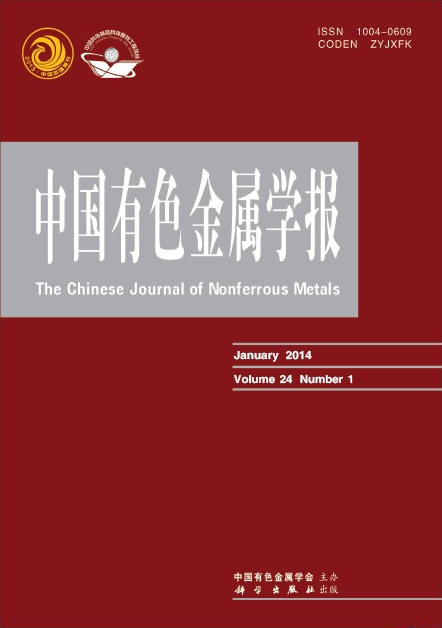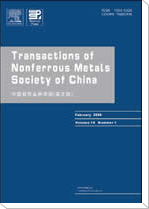( 1. 西南科技大学 材料科学与工程学院, 绵阳 621002;
2. 重庆大学 材料科学与工程学院, 重庆 400044)
摘 要: 通过Gleeble高温热模拟实验, 采用加工图理论分析了AZ31镁合金在中温变形过程中的流变失稳特征。 结果表明: AZ31镁合金在250 ℃进行塑性变形时, 应变速率不同将出现不同的变形组织,其规律与一般金属的存在显著差别; 在低应变速率(小于0.15 s-1)条件下, 显微组织出现大晶粒被细小晶粒包围的“项链”组织特征;当变形量足够大时, 塑性变形协调机制不能满足, 出现流变失稳, 试样开裂; 随着应变速率的提高, 由于孪生变形机制的激活, 大晶粒产生孪生变形, 使晶界处的应力集中得到缓解,塑性流变过程逐渐稳定。
关键字: 镁合金; 加工图; 塑性; 孪生
( 1. School of Materials Science and Engineering,
Southwest University of Science and Technology, Mianyang 621002,China;
2. School of Materials Science and Engineering,
Chongqing University, Chongqing 400044, China)
Abstract: The instability flow characteristics of AZ31 magnesium alloy at moderate temperature was analyzed by Gleeble simulation test at elevated temperatures. The results show that the microstructures after deformation at 250 ℃ change markedly with the variety of strain rates, which is different from other metal materials. At low strain rates (less than 0.15 s-1), the necklace microstructures, where large grains are encircled with fine grains, scatter over the deformation regions of samples, and then result in cracks in samples with increasing strain because of flow instability. The reason is that the continuity of plastic deformation is breached by necklace microstructures. However, the plastic flow becomes stable gradually, as the strain rate increases, owing to activation of twinning deformation to release the concentration of stress at grains boundaries.
Key words: magnesium alloy; processing map; ductility; twinning


